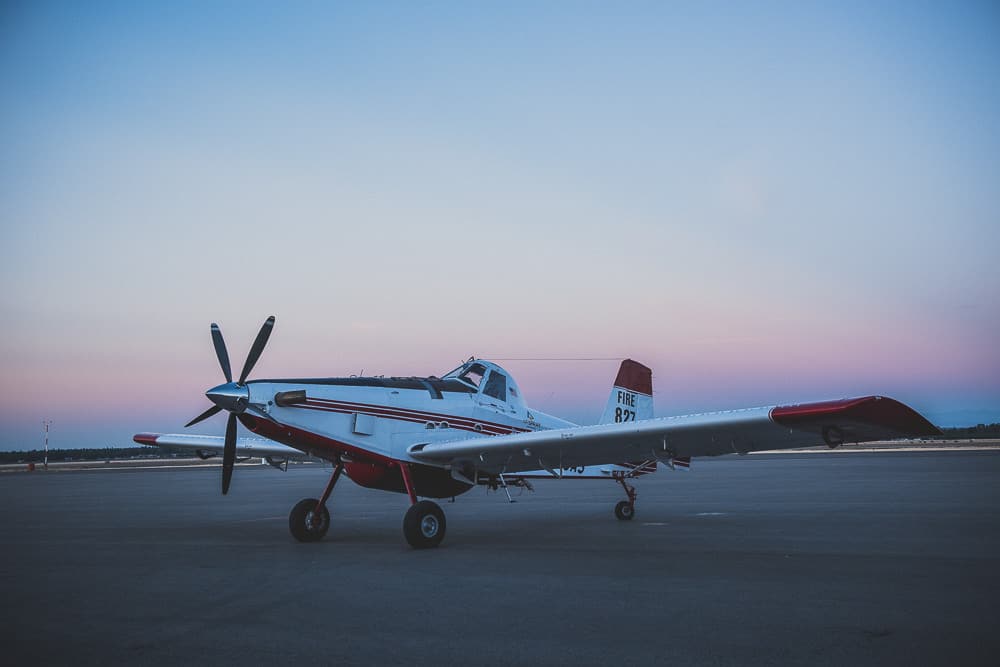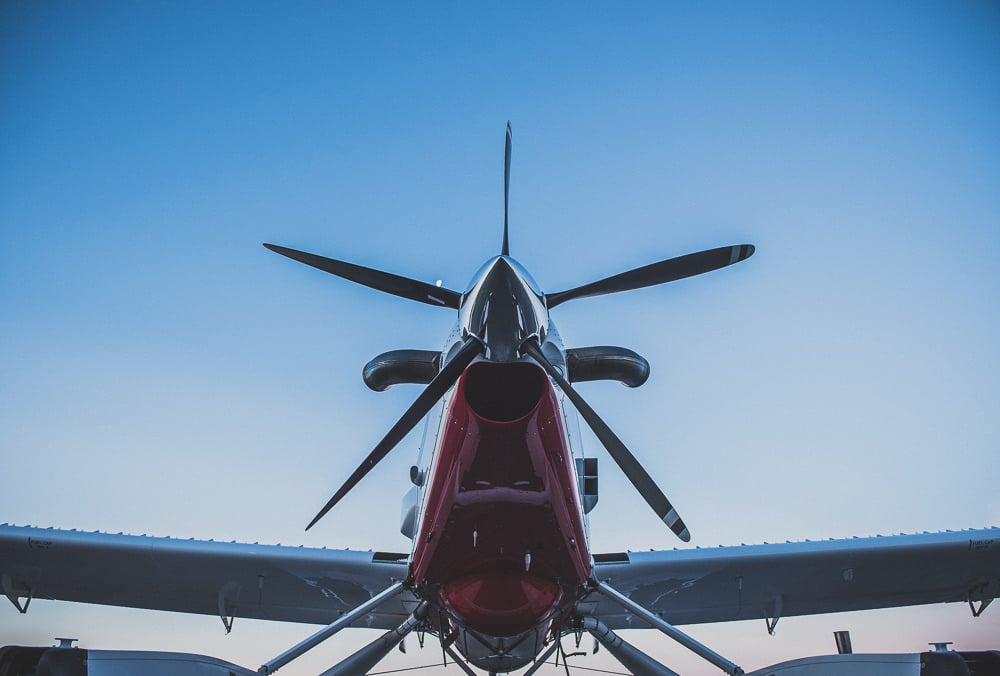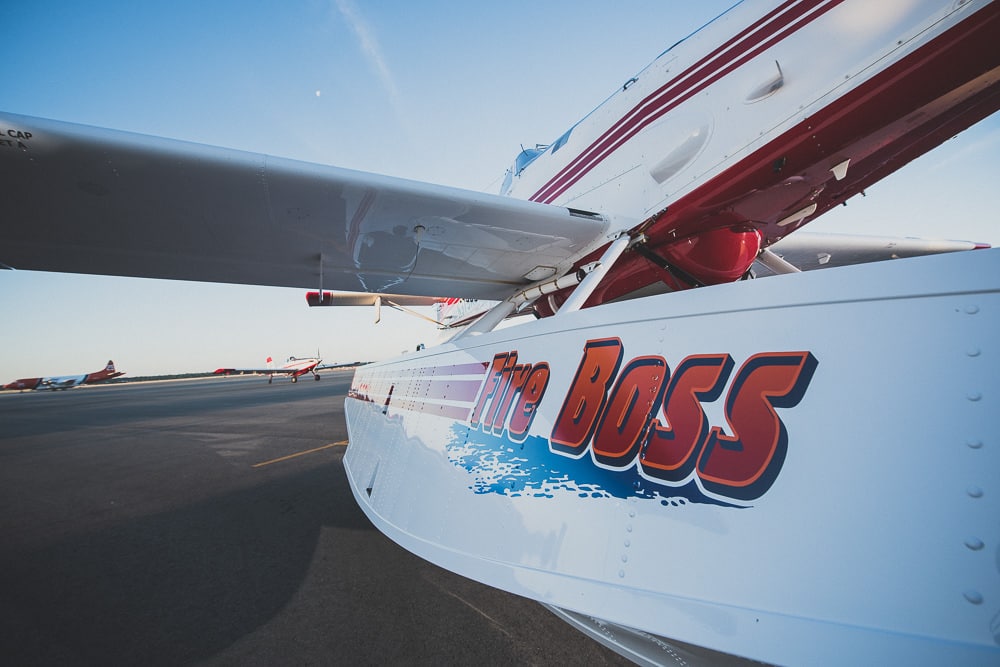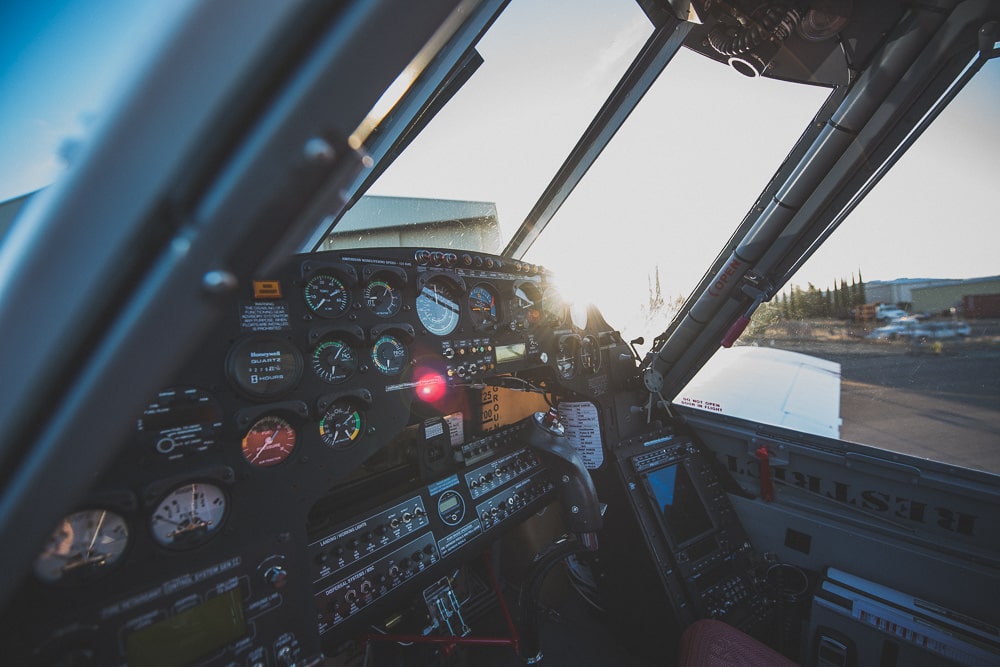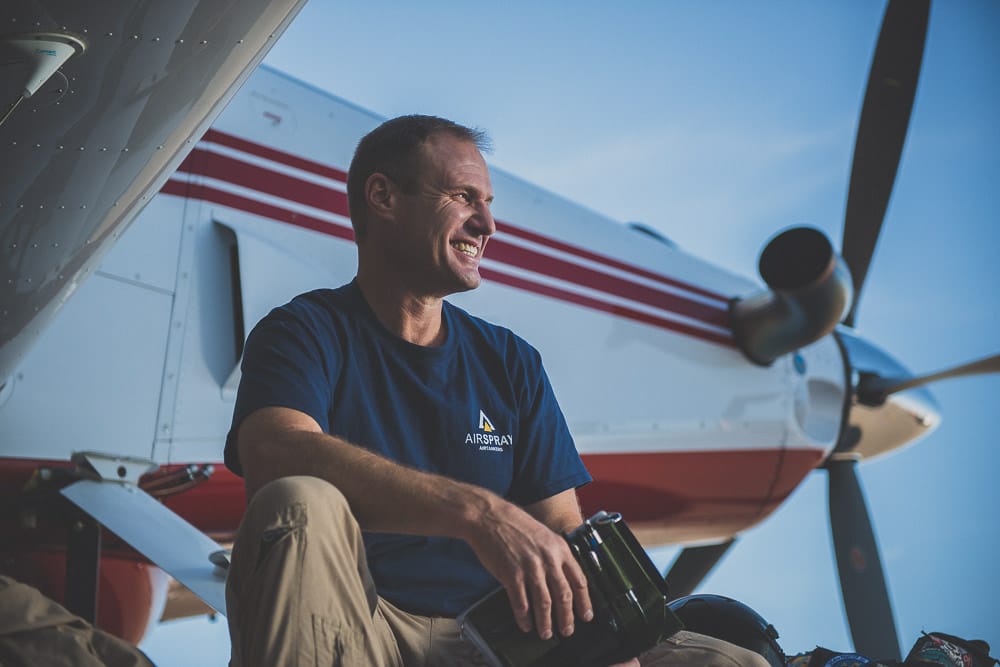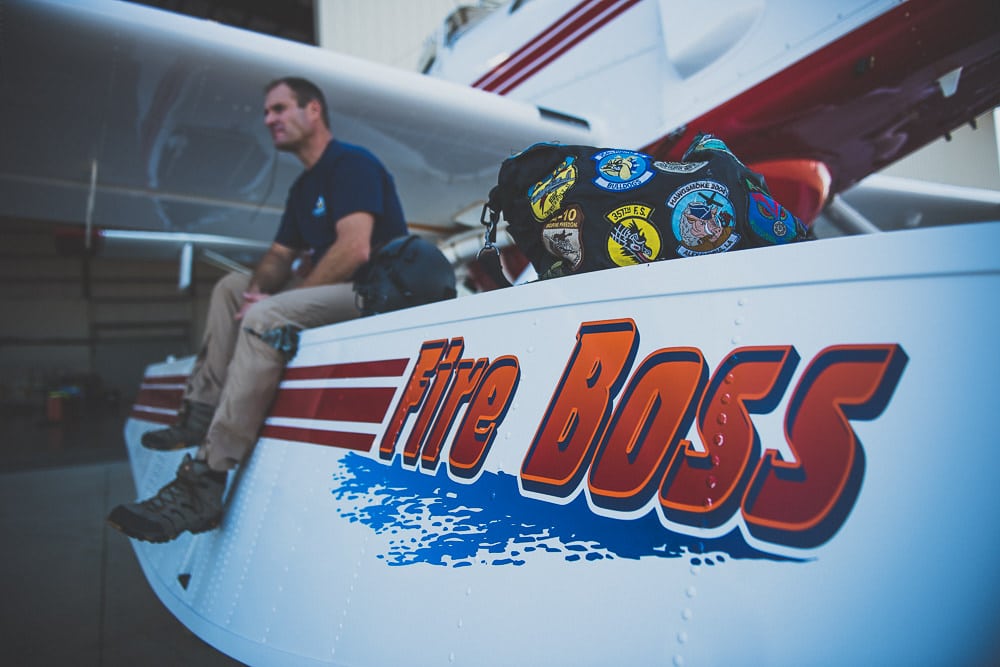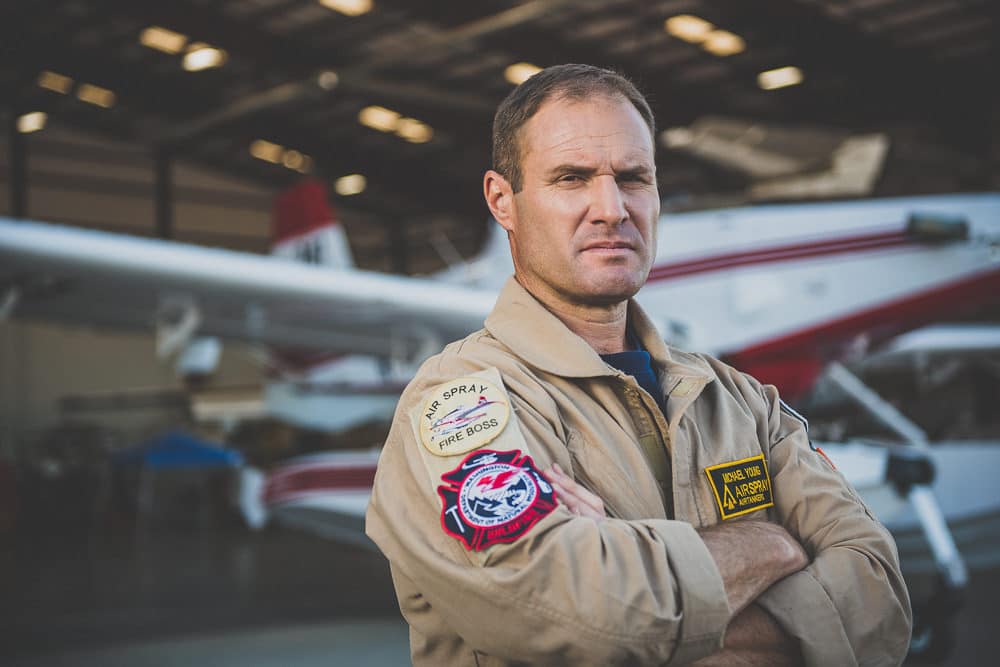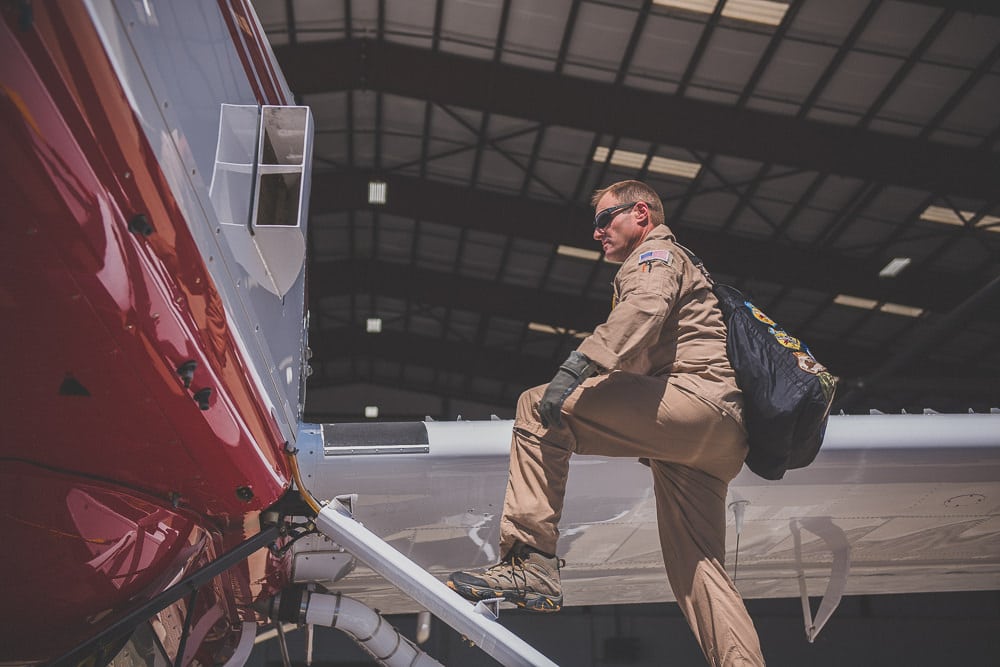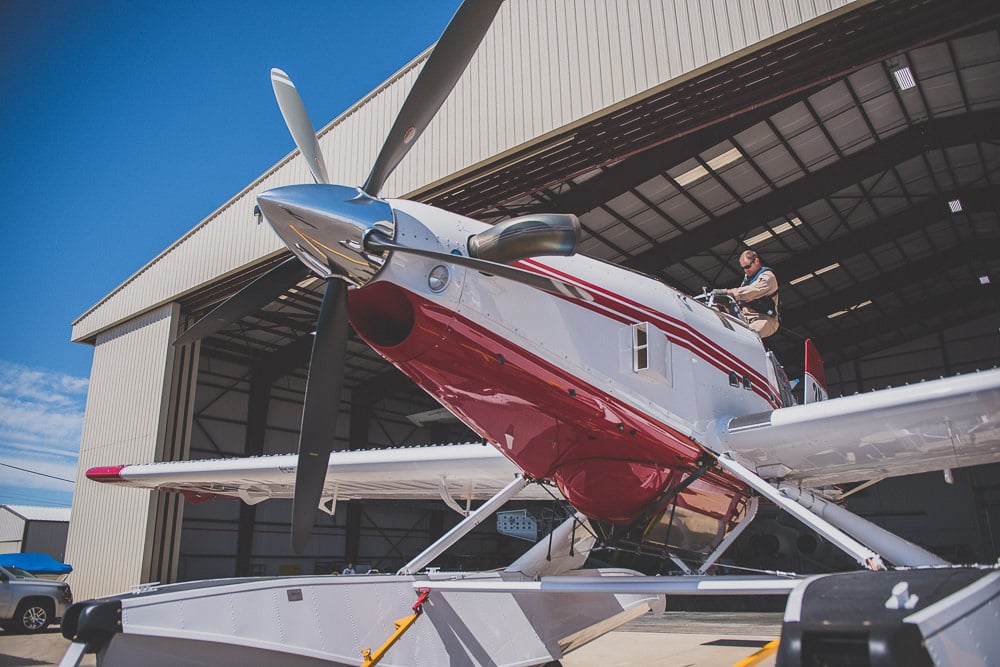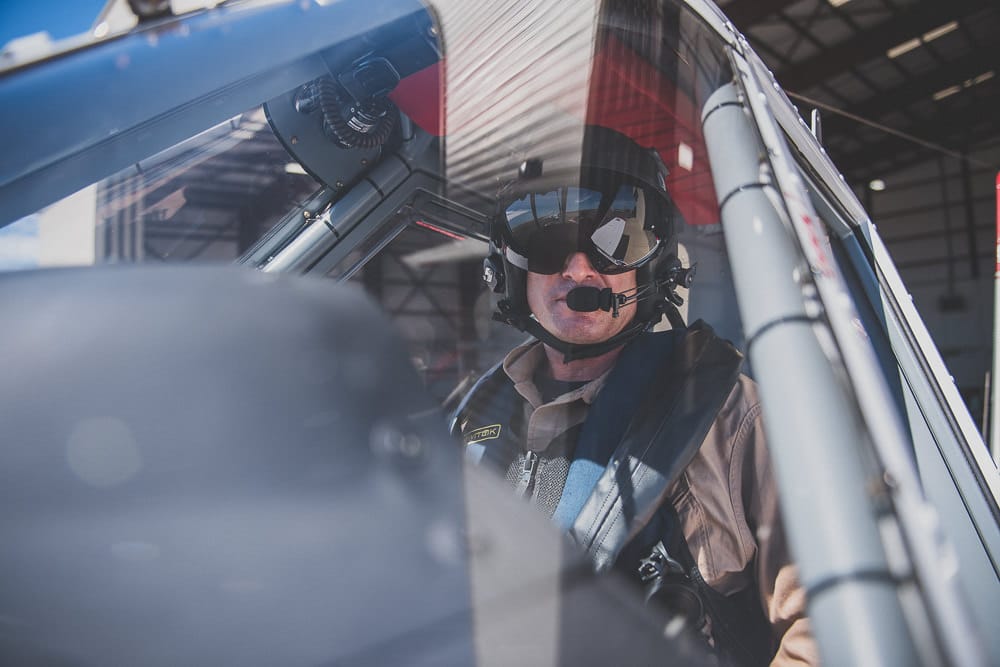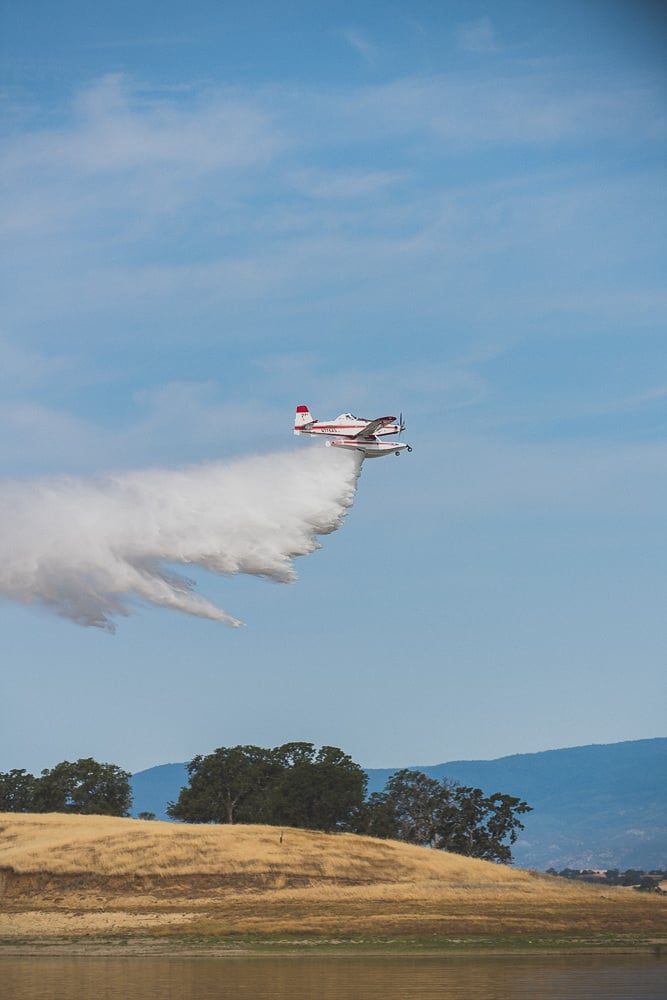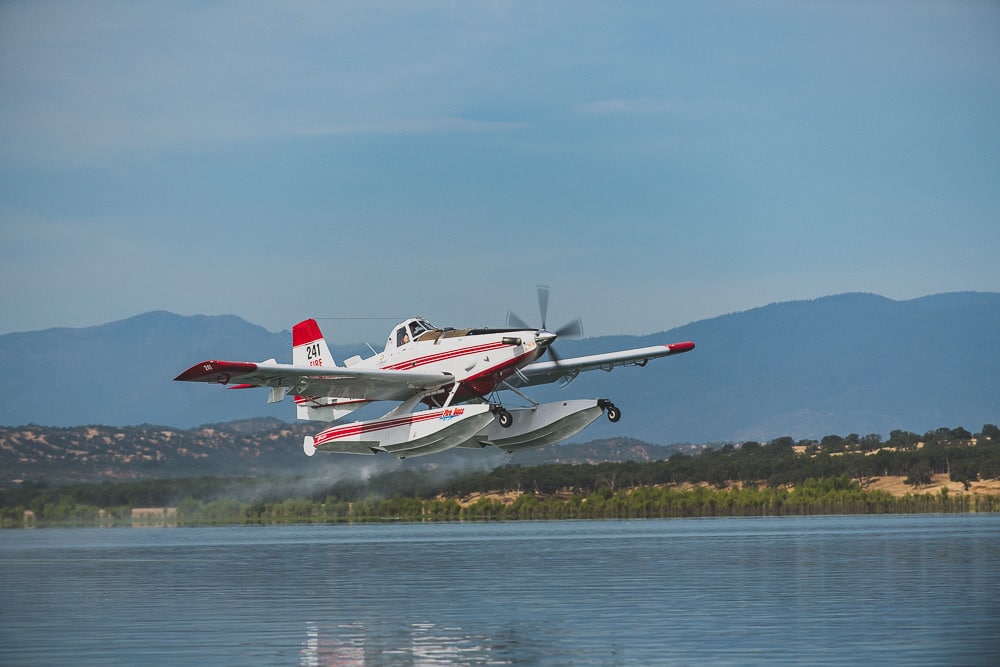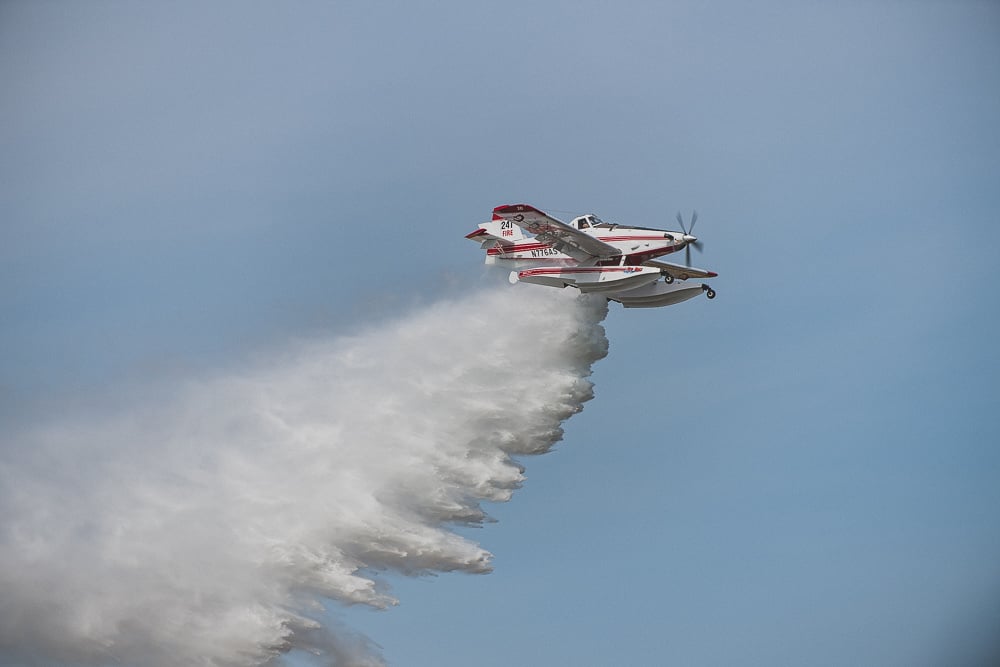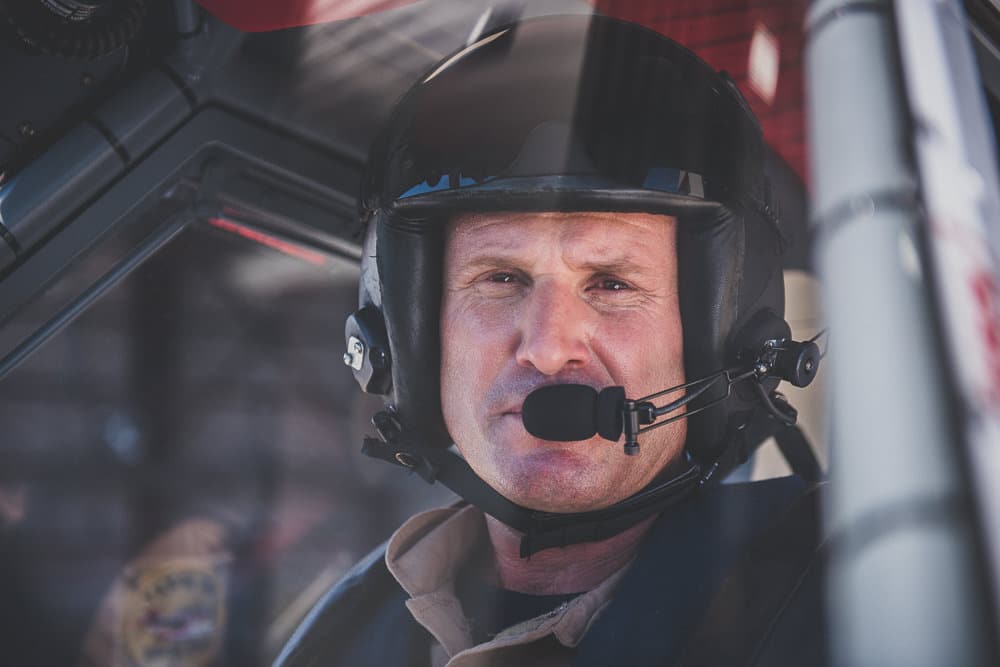He flew the A-10 protecting soldiers in Afghanistan and Iraq. Today Mike Young safeguards the guys on the fire line.
North America’s forests cover almost half of its landmass. They are a crucial part of our natural heritage and economy. And in some areas of the country, they burn.
Operating from Chico, California, in the heart of California’s wildfire region, Air Spray Air Tankers USA is an aerial firefighting operation with a mission to protect forests and communities from these fires. Chief Pilot Mike Young, a former Air Force pilot, approaches this job with military precision and the best equipment he can get—an Air Tractor AT-802F Fire Boss. Mike knows what’s at stake. “You’re flying into fire,” he says. “You’ve got fire whirls. You’ve got environmental effects that can turn the airplane upside down. If you show up to the job in a complacent manner, you probably shouldn’t get in the airplane. One of the biggest things I’ve taken away from this business is simply honoring and respecting its serious nature.”
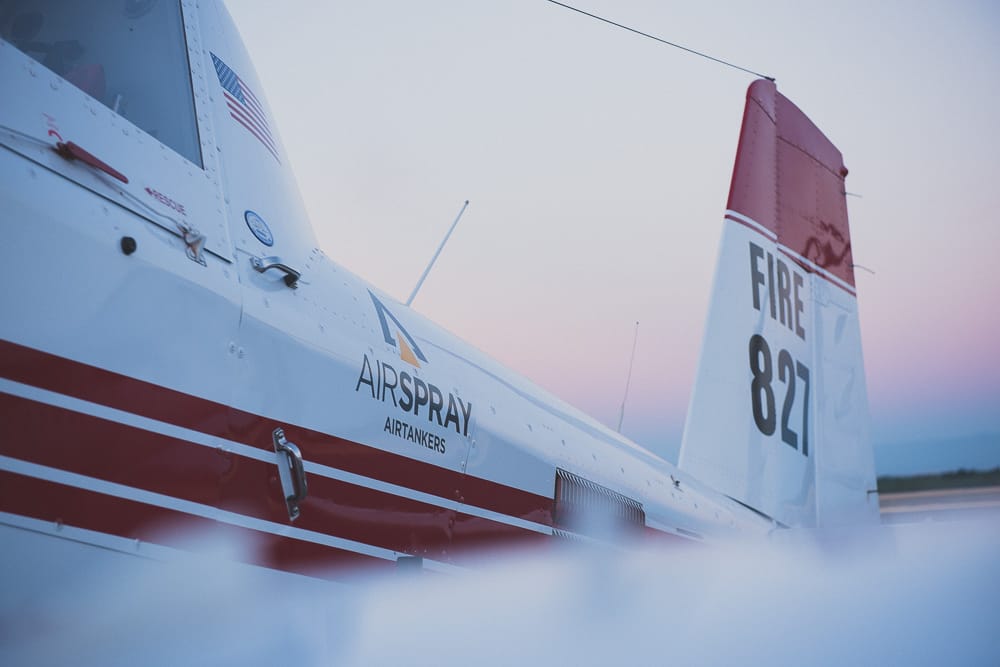
When the stakes are high
Chico sits on the Sacramento Valley floor, close to the foothills of the Cascade Range to the north and the Sierra Nevada range to the east and south. The area has always had its share of wildfires to deal with. But longer, more severe fire seasons have put this region on the map in recent years. In fact, Chico is just 14 miles from Paradise, the town leveled by the Camp Fire, which destroyed more than 14,000 homes, consumed more than 153,000 acres, and claimed 85 lives. The fire impacted the entire region, including the team at Air Spray. Crew members, neighbors and family members lost homes in the blaze.
So if you live and work in the area like Mike, wildfire management is much more than a job. It’s a mission. He trusts not only his own life, but the life of others, to the AT-802F Fire Boss. Air Tractor’s single engine air tanker (SEAT) has proven itself around the world as a versatile, rugged and effective aerial firefighter. “Flying a Fire Boss is not easy,” Mike says. “You have to respect these airplanes. Any pilot that looks at a Fire Boss and says ‘I can fly anything, I’m the greatest pilot in the world,’ is going to be humbled very quickly.’”
A cool head, preparedness and precision is what counts.
“You need to be professional about it, and you need to not push it too far because you’re flying 80 feet off the ground,” Michael adds.
The Air Spray aerial firefighting fleet based at Chico includes amphibious AT-802F Fire Bosses, wheeled Air Tractor AT-802Fs, and BAe-146 large air tankers. From this location, nestled between two large mountain lakes, Air Spray pilots train and build upon their skills, practicing air tanker tactics, scooping and dropping water, and flying as coordinated flight groups. Working together they have the ability to deliver many thousands of gallons per hour of water for extended initial attack and ground support.
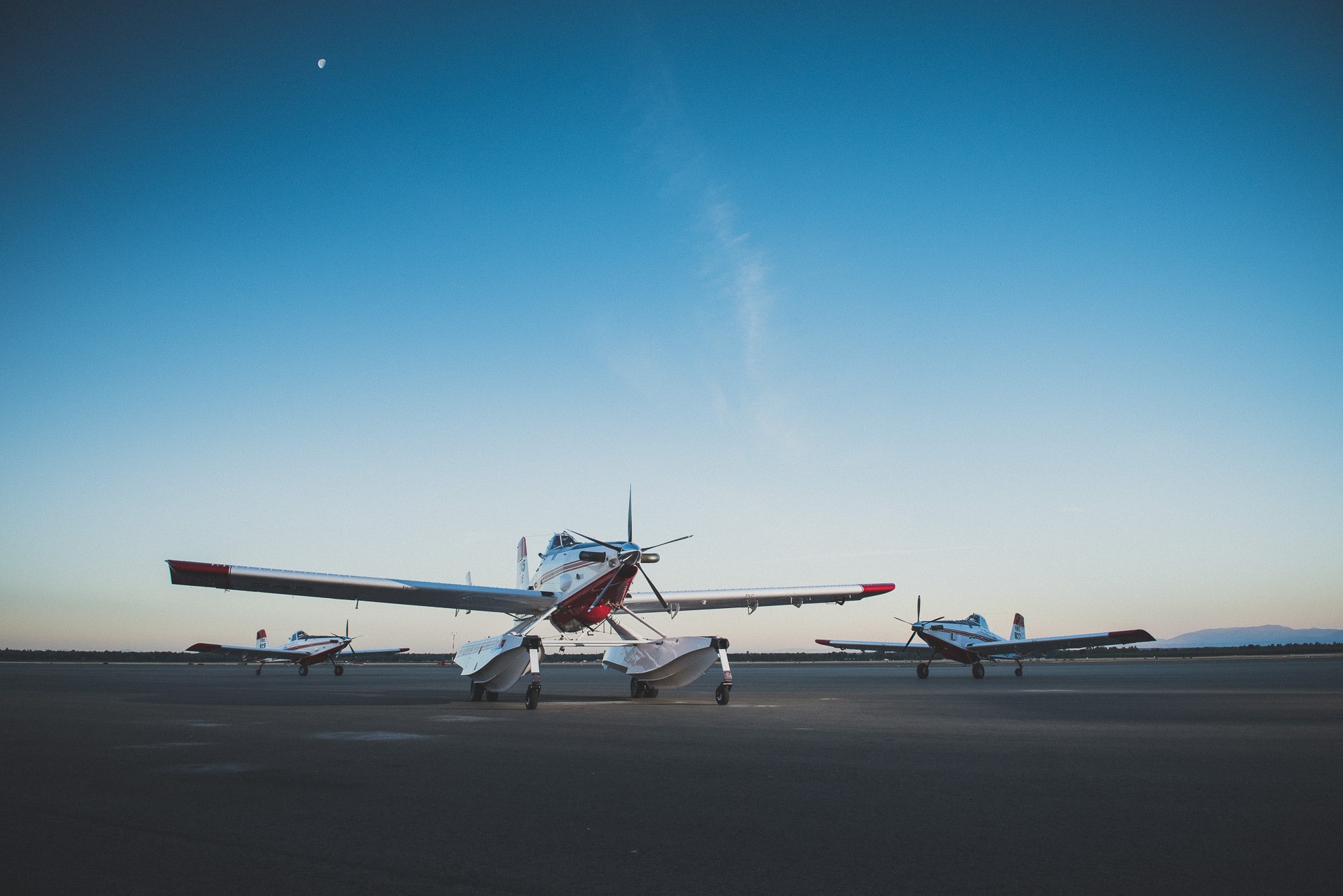
Protecting the forests and people
Air Spray has operations in both Canada and the United States. The company works closely with government agencies to provide air tanker services for support of firefighting crews on the ground. This support may be in the form of initial attack on wildfires that threaten to grow much larger, support to reinforce containment lines, cooling hot spots, or protecting strategically valuable areas or specific structures threatened by wildfire. “It’s a company that’s about supporting a mission, and that mission is putting out fires and supporting guys on the ground,” Mike says.
Moreover, the company focuses on its people.
“It’s not just a job. It’s not just a paycheck. It’s an organization where you’re taken care of. You’re trained well. You feel respected. You’re expected to perform at a very high standard, but you’re given the tools to do that well,” he adds.
Serve, so others may live
When it comes to fighting wildfires, Mike draws a direct line from his Air Force service to his current job. His career continues to be based on service to a larger cause. Mike comes from a military family. His dad was a decorated B-52 pilot. And Mike himself is a 20-year Air Force veteran. He flew A-10s over Afghanistan and Iraq.
“I wanted to be an A-10 pilot. It’s all I ever wanted to do. It was my passion.”
While many firefighting pilots transition from the realm of aerial application into firefighting, Mike was able to translate his close air support experience into a career as an aerial firefighter. “Flying an A-10 is much like what we are doing in a single engine air tanker, especially the Fire Boss,” Mike says. And just as in military operations, 802F Fire Bosses frequently work together in flight groups to boost their effectiveness and cost efficiencies.
“We fly in flights and utilize group tactics. We work as a collective, coordinated, integrated flight of two, four, six, eight Fire Bosses to affect a target—a fire—to put it out, to do what the guys on the ground need done,” Mike says. They fly under the direction of an air tactical controller. “We work with an air tactical group supervisor or a lead plane that coordinates air-to-ground actions, aircraft deconfliction, and comms with the guys on the ground.” he explains. “It’s incredibly similar. Coming from the military it was very easy to transition into this world because I understood airspace, deconfliction, and targeting.”
Air Spray is able to address a myriad of wildfire scenarios with its wheeled and amphibious AT-802Fs. An AT-802F air tanker can deliver up to 800 gallons of retardant or water onto grass and brush fires, while larger timber fires can be attacked with multiple 802F aircraft. A flight of Fire Boss airplanes scooping from a nearby water source can quickly knock down or extinguish small wildfires. Larger fires can be contained when roads or natural breaks can be incorporated as containment lines. These fire response flight options help fire agencies adjust their response level to the fire size and behavior.
That’s the type of precision needed when facing the unpredictable nature of wildfires.
Training, precision and focus
Today, sprawling development is increasingly putting lives and property in danger in wildland-urban interface areas. And more often than not, pilots like Mike find themselves as the last line of defense before fires reach homes. With the speed at which a wildfire can travel, Air Spray pilots are on call throughout the fire season to provide fire suppression as quickly as possible.
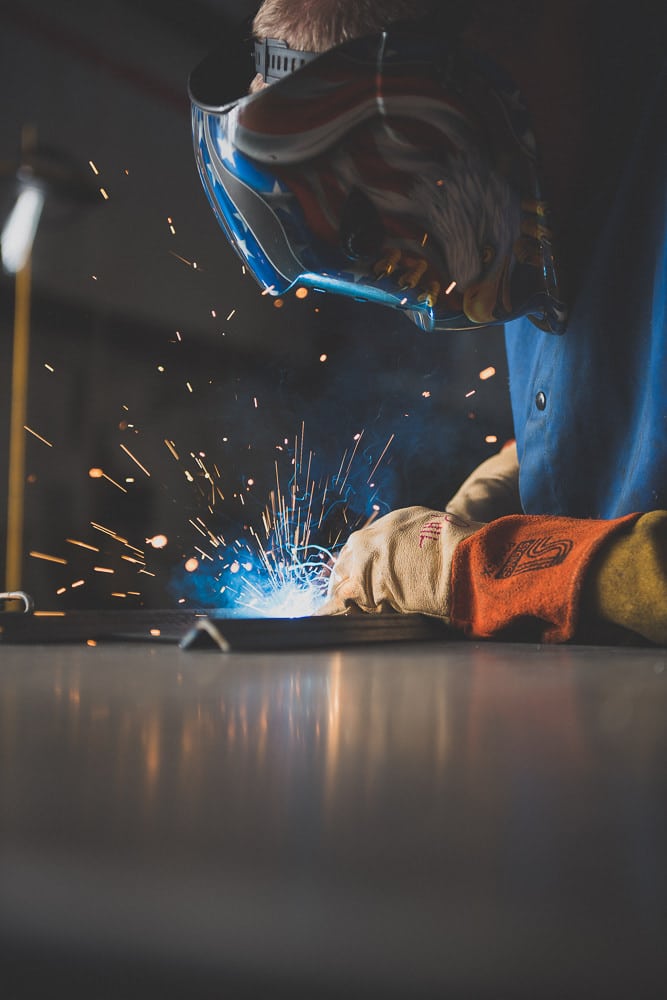
The fire season is rough on the airplanes and flight crews. To ensure safe operations, every aircraft returns to the Air Spray’s maintenance facilities to undergo thorough inspections, maintenance and upgrades during off season months. Air Spray pilots also return to the flight line for “spring training” to hone their flying skills and complete annual training requirements before the fire season begins. “We brief it up, we fly it, we debrief it. We have harsh debriefs. We make sure our guys are clear about the lessons learned so that they will make it home at the end of the day,” Mike says.
Because in real life, there are few chances for do-overs.
Flying to protect others
Aerial firefighting is a challenging job, one that is becoming increasingly more essential in many parts of the country. Safeguarding crews from above the fire line requires focus, skill and a respect for the risks. That’s what Mike wants to see in his fellow pilots and ground crew. “Be disciplined. Own up to your mistakes. Look for the lessons learned. Always try to walk away from something, from any scenario…good, bad or ugly, asking yourself ‘What did I learn out of that?’”
Oversights, mental lapses or mistakes in and around the airplane can have life-altering consequences.
“I’ve learned over the years to go slow to go fast, follow the checklist, and when in doubt come back and do it again.”
As Mike and his team put their lives on the line protecting forests and people, we at Air Tractor make sure they have the best equipment for the mission.

